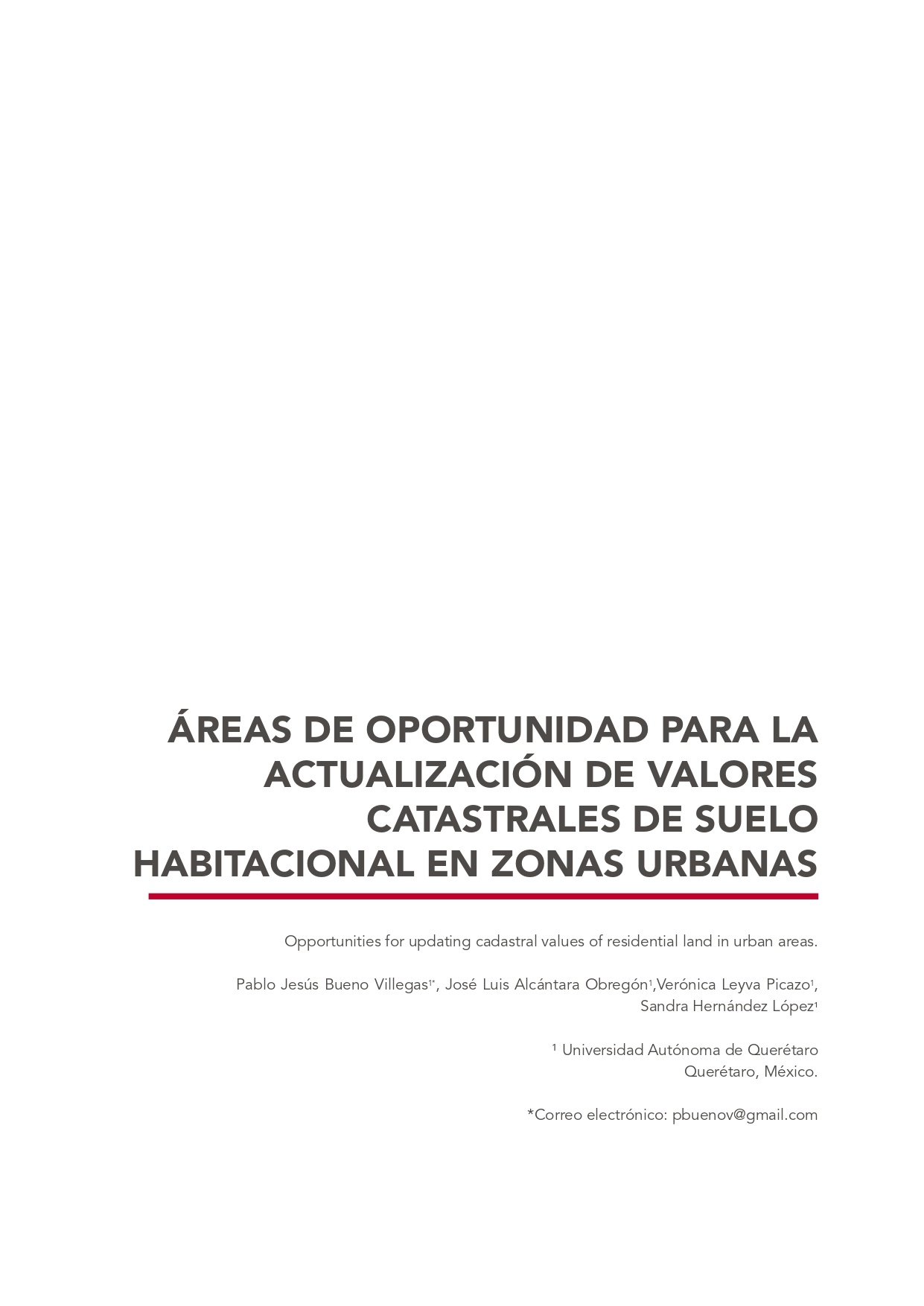Abstract
In Latin America, land values, the basis for the collection of real estate property taxes (cadastral values), show certain outdated; in Mexico, nearly half of the base values are outdated by up to 15 years, a fact that in itself contravenes national laws. Economically, this outdating represents a loss in municipal revenues, which is reflected in studies by the Organization for Economic Cooperation and Development (OECD) that position property taxes in Mexico below the average percentage of gross domestic product (GDP) in Latin America and the Caribbean. This article will serve as a bibliographic analysis for the development of future works and will provide a theoretical basis for updating cadastral values. Elements of convergence were found in the cases analyzed that make it possible to identify areas of opportunity for updating cadastral land values through the preparation of isolinear maps. It is concluded that the updating of cadastral land values is possible and feasible through the participation of two consolidated institutions in Mexico, which although they were not created with the express purpose of serving to increase municipal real estate property taxes, they will reduce one of the most complicated parts of the updating process.

This work is licensed under a Creative Commons Attribution-NonCommercial 4.0 International License.
Copyright (c) 2022 Perspectivas de la Ciencia y la Tecnología

